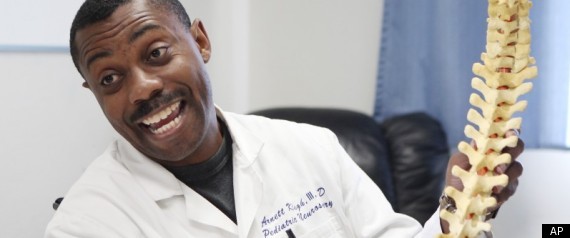Landstuhl Regional Medical Center Saves U.S. Military Lives In Germany

Landstuhl Regional Medical Center Saves U.S. Military Lives In Germany

LANDSTUHL, Germany -- Volunteer staff from the U.S. military's Landstuhl Regional Medical center huddle outside the emergency room doors, waiting under heat lamps on a crisp morning for what has become a daily routine in a decade of war the arrival on a blue bus of the latest casualties from Iraq and Afghanistan.
Some are in surgical scrubs, others in uniform or white hospital gowns. They crowd around the back of the modified school bus as the door opens, forming lines on either side, yelling "got it!" as they pass along the stretcher loaded with both patient and portable life support system and lower it to a wheeled gurney.
A chaplain leans over and tells the Marine who has lost both his legs to a roadside bomb in Afghanistan that he's now safe and in good hands. "When they come over here we want to make sure that it's not heartbreak hotel," said Navy chaplain Commander Manuel Mak after talking with the incoming wounded.
There's a saying in the U.S. military that once you've made it to Landstuhl, you've made it. After 10 years of war in Afghanistan and eight in Iraq, that's never been more true. The medical center boasts a unique combination of cutting-edge advances in battlefield medicine and hard-won experience in treating serious trauma.
Since the start of the conflicts that have seen more than 6,000 Americans killed, Landstuhl has treated more than 13,000 combat injuries and some 64,000 noncombat injuries from Afghanistan and Iraq, from heat exhaustion to heart attacks boasting a 99.5 percent survival rate for its trauma patients. The hospital has also treated soldiers from 49 coalition nations and others injured in the combat zones, including several journalists.
Injured troops are flown in on aircraft that are essentially airborne intensive care units something not available during the 1991 Gulf War or for the U.S. troops in Somalia after that. When they arrive, doctors have already "seen" inside their bodies, looking at CAT-scans taken in the combat zone, sent electronically to the hospital, and turned into 3-D images by computers.
Doctors can then locate bullets, shrapnel and bone fragments, and identify fractures, internal bleeding and other issues technology only available for the past five years.
"When they get here, we already have a very good idea of what's going on inside them," said radiology chief Air Force Lt. Col. Tim Richter as he looked at the image of a soldier hit with a piece of shrapnel over his left eye, which had embedded itself and bone fragments deep inside his brain. "The imaging allows us to make advance decisions on these patients even before they arrive."
When they're stabilized physically, psychological experts and others are on hand to help them work through post traumatic stress disorder, and the effects of concussions sometimes multiple concussions so common in those who have survived roadside bombs and other such attacks.
The hospital in the southwestern German state of Rhineland-Palatinate was just named in July a Level I Trauma Center by the American College of Surgeons, making it the only hospital given that honor outside the United States by the professional association that sets standards for surgical education and practice.
"It's really a Level I Trauma system," said Trauma Nurse Director Kathleen Martin, a civilian who ran the trauma center at the University of Pennsylvania medical center for a dozen years before coming to Landstuhl in 2006.
"It's just amazing what the medics and the MASH-type units (in the combat zones) are doing ... So many of the patients are so severely injured and they're surviving to get here at the start of the war they wouldn't have been surviving."
Just last year, a team of specialists from Landstuhl were able to save the life of a 22-year-old soldier shot in the lung. The organ was damaged so badly it had to be removed. They used a German-developed portable machine that oxygenates blood and takes carbon dioxide out through an intravenous connection, taking the place of the lung functions.
About the size of a suitcase, the portable ECMO machine standing for "extracorporeal membrane oxygenation" had never before been used in a combat evacuation but functioned perfectly. The Landstuhl team had the advantage of being trained on the machine by the nearby University of Regensburg Hospital doctors who helped develop it.
"Generally that's a non-survivable injury, however we were able to get this portable ECMO device (to Afghanistan)," said Trauma Director Lt. Col. John Oh. "This device took over the function of his lung partially and he was able to be flown back, go to Landstuhl, and within weeks he actually recovered and was able to walk out of the hospital."
The ECMO was a civilian-developed device adopted for military purposes, but methods being used by military doctors that have proved effective are also now finding their way into civilian hospitals like administering blood almost immediately after the injury.
"The increased use of blood product as opposed to the use of traditional IV fluids has changed dramatically," said Dr. Peter Muskat, the Trauma director of the University of Cincinnati Hospital who volunteered two weeks of his time to work at Landstuhl.
"I am now able to save patients that I could not have saved 10, 12 or 13 years ago and this is a direct result of the interaction between ... military and civilian."
Landstuhl Regional Medical Center Saves U.S. Military Lives In Germany

